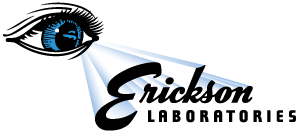Infants born with congenital anophthalmia (the absence of the eyeball) or micro-opthalmia (an abnormally small eyeball) will often be referred to the Ocularist for expansion conformer therapy. It is very important for the Ocularist and Physician to work closely together in these cases. Conformer therapy prior to fabrication of ocular prostheses or scleral shells helps the sockets grow in conjunction with the child’s growth during these early months. We create a series of incrementally sized conformers that are worn by the infant. In the absence of the normal eyeball, the conformers produce the stimulation needed to “tell” the bony orbit to grow and they help to increase the size of the socket and help the lid structure in retention of the increasing sizes of the conformers. For this conformer therapy to be successful we need to work closely with the parents, as well, in increasing the size of the conformers at the appropriate intervals to keep up with their child’s growth. When the current conformer becomes more loosely fitting and the eyelids appear to look more closed, these are signs that your child is ready for the next increase in size of conformer. Once the conformers have increased adequate size of the socket, we are ready to make the switch from conformers to an ocular prosthesis or scleral cover shell. Your child’s physician may also choose surgical intervention at some point during this process.
